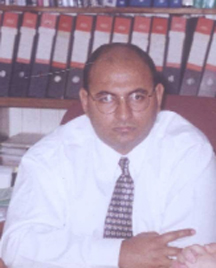
But he explained that the price is denominated in US dollars and the foreign currency amount is US$3.5M, valued before any work was done on the property.
He said that whenever the complex is bought the price will be paid at the existing rate of exchange at the time. The company has been granted a 99-year lease at $50M per annum.
According to Brassington, the price of $700M was the average valuation between the value Government obtained from an independent valuator and one contracted by the investors.
He explained that it was important for the valuation to be done before any development work started on the complex, since pricing it with the inputs from the developer would have been unattractive.
Commenting on the series of comments being made in the Peeping Tom column in the Kaieteur News, Brassington said that the columnist has lost all objectivity, fairness and balance.
He reiterated that the investment was a good one and compares favourably to other privatisation deals and that the Government had to balance investment, employment and how much is made.
During a press conference last week Monday, Brassington outlined that the annual upkeep costs for the facility in 2006 were almost $20M: $8M in security, $6M in rates and taxes, and over $5M in cleaning and miscellaneous repairs including perimeter lighting. He said that over the years, although parts of the complex now leased to QAII had been rented on short term licenses, the fees collected were never sufficient to cover the upkeep.
He said that the Privatisation Board and Cabinet considered the following benefits in accepting the proposal: utilisation of the land and buildings which had fallen into a state of dilapidation and vandalism; avoidance by NICIL of the high level of maintenance, security, rates and taxes and insurance associated with this property; creation of new jobs; conversion of the property which was not making a net return into an entity with a positive cash flow; and encourage economic activity in the Ruimveldt Industrial Area. He said too that the persons from the area will be targeted for employment.
The privatisation of the entity started with an advertisement in the last quarter of 2006 for the former G&C Sanata operations but no bids were received on the extended closing date of February 28, 2007.
The tender which had an original closing date of January 2007 was re-advertised over 20 times and closing date extended to the end of February to encourage interest from both local and overseas investors. The bid box was opened on February 28, 2007 in the presence of a representative of the Auditor General at which time the non-receipt of bids was recorded.
According to Brassington, in accordance with the Privatisation Policy Framework Paper (PPFP) of July 1993, where an entity has been advertised and no bids received, direct negotiations can be held.
However, in the PPFP this seems to refer to bids that were unresponsive. There was none in this case.
In mid 2007, a proposal to lease the complex was received from QAII and following detailed discussions and negotiations a paper submitted by the Privatisation Unit to the Privatisation Board on May 9, 2007 unanimously recommended approval of the proposal. Cabinet approved the recommendations of the Board in May of 2007.





